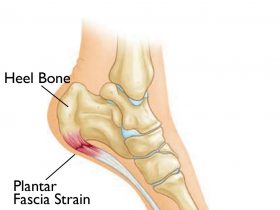James Watson, Francis Crick, and J. Rosalind Franklin laid the foundations for genetic sequencing when they discovered the double helix structure of DNA in the early 1950s. Since then, the science of molecular genetics has grown by leaps and bounds.
Consider Frederick Sanger’s efforts to map the first complete DNA genome sequence in 1977 and the use of PCR (polymerase chain reaction) to usher in an age of automated sequencing in 1988. PCR sequencing gave birth to next generation sequencing (NGS) as we know it today. Scientists now use many NGS modalities to automatically determine the chemical sequencing of DNA or RNA, and the power of NGS is undeniable.
Using the first generation sequencing technique of capillary electrophoresis, scientists needed well over a decade to produce a complete the first full and accurate map of the human genome less than two decades ago. Thanks to next generation sequencing, they can now sequence an entire human genome in under a day.
Associate Fellow and Industry Principal of the TechVision Group at the leading information and growth consulting firm Frost & Sullivan, Cecilia Van Cauwenberghe, PhD, took a look at the emerging technologies that are taking NGS into the future. Appraising the world of DNA next generation sequencing as a whole, she comments that it is “evolving speedily.
Building on output-boosting NGS modalities such as ion semiconductor sequencing, nano ball sequencing, and other short-read sequencing approaches, third generation long-read sequencing represents what Dr. Cauwenberghe calls a new “step forward” in the NGS journey. This new frontier in genetics eliminates a number of limitations, such as large genomic rearrangements and repeated sequence reliability, which have long plagued short-read sequencing techniques.
The applications of third generation sequencing are both numerous and far-reaching. Taking next generation sequencing to the next level, scientists can now sequence DNA with higher yields and longer read rates while doing the job considerably faster and at a significantly lower price point. The leading third generation sequencing modalities, according to Dr. Cauwenbergh include Single Molecule Sequencing (SMS), Zero Mode Waveguides (ZMW), Single-stranded DNA Molecule Real-Time (SMRT), and Nanopore Based Technologies.
Each of these modalities is expanding in relevance across a number of clinical fields and applications. In particular, their incredible speed and accuracy make these third generation sequencing techniques ideal for genetic diagnosis.
Evolving technologies are furthering the capabilities of next generation sequencing to accelerate the molecular prediction of human diseases in a variety of ways. Oncologists, for example, have used modern whole-genome sequencing to identify gene alterations and mutation carriers that may lead to the onset of cancerous tumors of all types. Genetic sequencing has also proven beneficial in the broad detection of infection-causing pathogens. “A step futher,” writes Dr. Cauwenberghe, paraphrasing a study in the Journal of Personalized Medicine, “an oriented analysis of NGS data unknots vital hints in the search for the treatment of life-threatening diseases.”
As next generation sequencing continues to advance, it will continue to benefit from the parallel advancement of technologies such as artificial intelligence and both machine learning (ML) and deep learning (DL) methodologies. ML sequencing promises to better examine very large sets of genomic data with a concentrated focus on the identification of new gene functions and gene regulation regions. DL sequencing, by contrast, can dramatically reduce overall sequencing turnaround time by engendering parallel readings of numerous individual DNA segments.
The science of DNA sequencing is also being propelled by new bioinformatics tools. By eliminating limitations and better managing genomic information and data analysis, these tools promise to drive the acquisition of what Dr. Cauwenberghe calls “new knowledge around the interpretation of rare genomic variants.”










